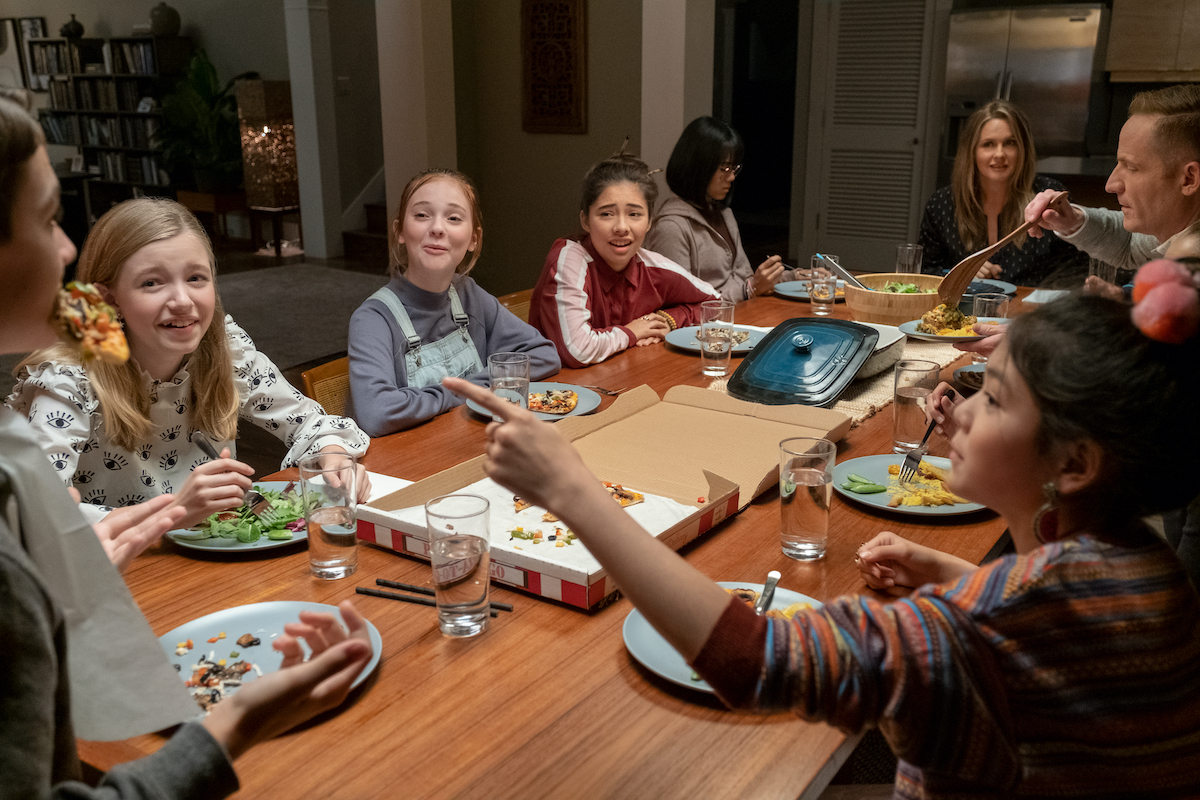Good News, 90’s Kids! The Baby-Sitters Club Is an Absolute Delight
5/5 stars


For many of us who grew up in the 90’s, Ann M. Martin’s Baby-Sitters Club series played a pivotal role in our childhoods. To start a business with an idyllically close-knit group of friends was the ultimate dream that Martin instilled in us. (Along with having Kristy Thomas’s self-confidence mixed with Claudia Kishi’s style–that was definitely my own personal dream.) Fans of the books have waited decades for a good adaptation, though after being burned by the 1995 movie, most of us may have given up hope that any film or TV show could capture the essence of this series that meant so much to so many of us.
Netflix’s adaptation–created by GLOW’s Rachel Shukert and starring a truly remarkable cast of young women–has finally made it happen.
This adaptation takes place in the present day (or, a pre-COVID/alternate reality version of the present day) but it also manages to feel entirely timeless. Yes, there are cell phones and some other clear physical reminders that this isn’t a period piece. But the club still justifies some of the books’ iconic old-school elements like gathering around a retro light-up landline phone (purchased on Etsy) and canvassing Stonybrook with fliers (aka “analogue” marketing).
At a time when gritty reboots of YA material is the going trend, The Baby-Sitters Club doesn’t try to distance itself from its source material, and that’s for the best. Everyone involved clearly has great affection and respect for Ann M. Martin’s original series, taking entire storylines, down to the names of the kids being babysat, straight from the books.
That’s not to say there aren’t some major modernizations. But all of those choices only serve to harness the spirit of the original, taking the characters we love and making them even more themselves. Kristy’s trademark headstrong nature lends itself to feminist crusades. Dawn’s California girl persona in the books manifested in beach-blonde hair and vocal vegetarian advocacy. In the modernization, she’s a Latinx activist who throws around terms like “economic stratification.” Mary-Anne’s boundless empathy makes her the perfect babysitter for a young transgender kid. Diversity has finally come to Stonybrook and the fictional town is so much better for it.
But the most substantial way in which the series pays homage to the original is the ways in which it celebrates kindness.
These girls did (and do, in this adaptation) exhibit some standard preteen dramatics. They fight with each other and snipe at their parents. But by the end of every book/episode, they’ve not just resolved their issues, but grown from them. They exist to be kind to one another and to learn to be kinder to themselves. Even the core of their ostensibly capitalistic club is less about making money than about providing love and support to the families they sit for.
It’s not just nostalgic adults that will love this show–it definitely feels like kids are the target viewers, just as with the books. The series manages to embrace its older audience without dipping into cynicism while also leaning heavily into its feel-good roots without ever turning fully saccharine. That’s quite a feat and also exactly what we all need right now.
(image: Liane Hentscher/Netflix)
Want more stories like this? Become a subscriber and support the site!
—The Mary Sue has a strict comment policy that forbids, but is not limited to, personal insults toward anyone, hate speech, and trolling.—
Have a tip we should know? [email protected]
